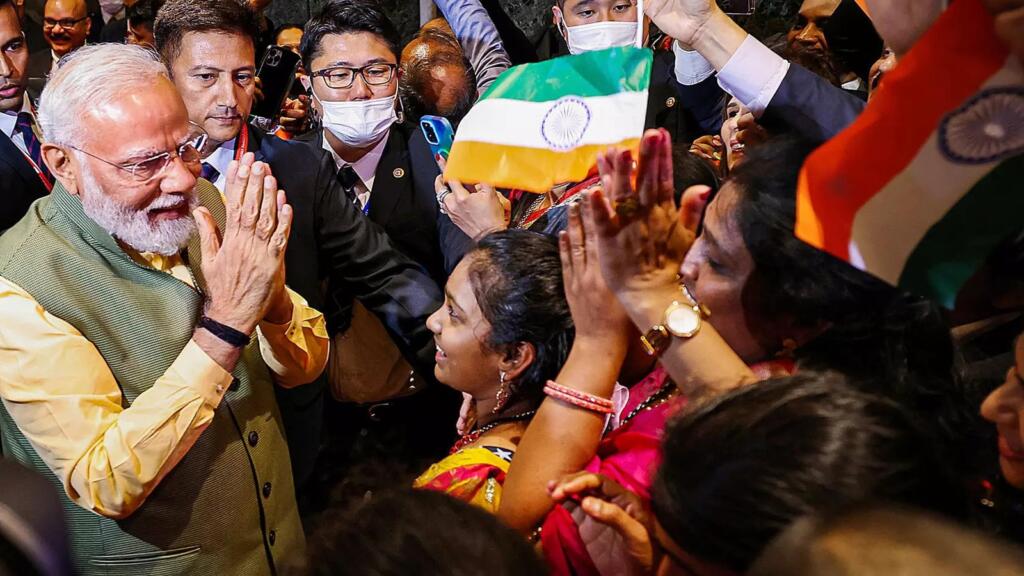Today, on October 7, 2024, Prime Minister Narendra Modi completes 23 years in public office, the time period that witnessed him serving as Chief Minister of Gujarat for three consecutive terms and as the leader of the BJP-led NDA government at the centre for over 10 years.
In both the capacities, Modi, who turned 74 last month, launched a series of ambitious schemes and initiatives that have been transformative in areas such as economic reforms and progress, sanitation, infrastructure and environment conservation.
Some of the bold initiatives of his governments both at the state and the central levels have placed India on the central stage globally.
According to a report, people privy to his style of governance say, Modi has held citizen engagement as key to progress. The Prime Minister’s Jan Bhagidari – involving citizens in governance process – or Jan Andolan has reduced distance between the government and the people.
The method has actually helped the man to first rollout sweeping change in Gujarat, which prior to 2001 struggled with issues such as water scarcity and power shortages, while the state’s economy was stagnating. After taking over as Prime Minister in 2014, when India was in the midst of a technology revolution, Modi took several initiatives to make the government responsive.
His working style in Gujarat, which is known as ‘Gujarat Model’, was introduced at the central level focusing on infrastructure development, investment and efficient governance. It became blueprint for his national agenda.
Modi’s Sujalam Sufalam Yojana, a comprehensive water management project that transformed the water-scarce Gujarat into a water-surplus state, laid the foundation for the national ‘Jal Jeevan Mission’, that aims to provide tap water connections to all rural households by this yearend.
Likewise, the ‘Jyotigram Yojana’, which ensured 24-hour electricity supply to all 18,000 villages in Gujarat, became the model for the national ‘Saubhagya Scheme’, targeting universal household electrification.
Modi government also worked hard for digital transformation and technological advancement in India.
Also Read: https://tfipost.com/2024/10/after-modi-and-yogi-bhagwat-also-stresses-need-for-hindu-unity-in-india/
The Prime Minister’s efforts to boost manufacturing and self-reliance focus on development of the villages and welfare of farmers.
In 2017, introduction of the Goods and Services Tax was one of the significant economic reforms by the Modi government.
His ‘One Nation, One Tax’ approach has changed the country’s complex tax structure and made it simple, resulting in ease of business.
Initiatives such as ‘Make in India’ and ‘Atmanirbhar Bharat’ have helped the country in several ways.
The ‘Digital India Mission’ has expanded internet access and digital literacy across India. The Unified Payments Interface (UPI) has revolutionized digital transactions, positioning India as a leader in real-time payments, and offering a payments method for several Global South nations without having to rely on multinational payment aggregators.
Another key focus for the Prime Minister has been sanitation.
The ‘Swachh Bharat Abhiyan’, a nationwide cleanliness drive, draws inspiration from Modi’s Nirmal Gujarat initiative in the state.
Over 116.8 million toilets have been build under the national cleanliness campaign with the government declaring all Indian villages open defecation free.
Modi’s governance based on ‘Vikas Bhi, Virasat Bhi’ (Development as well as Heritage) has sought to balance cultural preservation with modern development.
Now-a-days, the Prime Minister, along with other catchwords, have also been using the slogan of ‘Viksit Bharat’ to articulate a vision to make India a developed nation by 2047, the year when the country completes 100 years as an independent nation.
